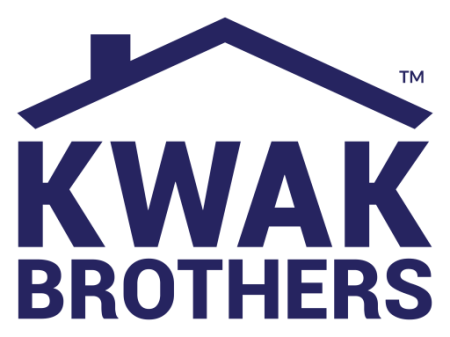You may have stumbled upon videos or other articles that claim that you can pay off your mortgage in 5-7 years. Many times, such methods involve using a HELOC, a Home Equity Line of Credit, to pay down the mortgage quicker. While it’s a bold claim, is it actually possible to pay off your mortgage in 5-7 years? Is this legitimate? You may feel confused by the explanation of such a method. Perhaps you have questions. So let’s dive in.
What Exactly is this Method?
The method has many names from Velocity Banking, Mortgage Acceleration, pill method, Replace Your Mortgage, and more. The official name of the strategy is “Accelerated Banking”. The goal behind this method is to help homeowners and property owners pay off their mortgage faster while saving money on the mortgage interest. This method may seem new to many but it isn’t. This method is widely practiced in other countries such as New Zealand and Australia. In Australia, they actually have a financial product designed for this strategy called an offset account. Here in the United States, banks don’t offer offset accounts. So a few banking and financial experts had a clever idea of mimicking the same method that the Australians are using by adopting a HELOC instead.
The idea works by taking your entire income and/or savings and depositing it against the HELOC’s principal balance. By doing so, you now owe less interest on the HELOC. But because a HELOC is a revolving line of credit, you’re able to withdraw the money out of the HELOC at any time through online banking or an app. A HELOC is truly flexible in many ways. By lowering the HELOC principal balance for a long period of time and delaying any withdrawals, the borrower CAN save money on the interest while simultaneously being able to use the same income for living expenses. This is quite clever.
Not only does it allow you to save money, you’re now able to treat your HELOC as a “savings account” – allowing you to deposit money and withdrawing it for emergency use. But by leaving your savings in your HELOC, it allows you to save money in the meantime because of the lowered principal balance of your HELOC.
What if the HELOC gets Frozen or Shutdown like 2008?
During the 2008 market crash, it is true that many homeowners had their HELOC shutdown or frozen involuntarily – forcing many homeowners having to make a large payment to the bank. This is known as a “margin call”. Banks typically do this when the homeowner has done something illegal or the use of their property is illegal. Another common reason is that if the homeowner owes more on their mortgage than what the home is actually worth (underwater), then the banks reserve the right to freeze or shut down the HELOC. In extreme cases, the banks may demand payments to lower the balance. The problem with the 2008 market crash is that many homeowners financed their homes with 80% LTV mortgages while simultaneously getting a HELOC to cover the 20% down payment required. Hence, homeowners were able to get 100% loans to finance their purchase.
However, much of this has gone away since the 2012’s passing of the Dodd-Frank Act. Plus, many banks have stopped lending 100% of the home value. And since the method suggests that you’re paying down the debt (not increasing it), you’d actually be in a safer situation than what happened in 2008.
What About the Higher & Variable Interest Rates on a HELOC?
So, this is a BIG myth to bust. After countless hours of research, it’s discovered that not all HELOCs are variable OR higher interest rate than a traditional mortgage. One particular user of this method has found a 2.68% Fixed Rate 1st lien HELOC. They are actively using this method to pay down their mortgage. Another user reported saying that they were qualified for 3.75% fixed rate HELOC. You may find banks that do offer a higher rate HELOC and they may be variable. But because a HELOC is a non-qualifying mortgage, banks have little more liberty to offer a variety of different HELOCs. Therefore, not all HELOCs are the same.
Why Not Use Extra Payments on The Mortgage?
This is a common question that many ask. The obvious and often used method is to simply take extra money and make a principal payment against the mortgage. However, there are many drawbacks to doing extra payments instead of the Accelerated Banking Method. First, when a homeowner throws extra payments into the mortgage balance, it locks up the money in the equity. If there’s ever an event where that money is needed for an emergency, the equity would be inaccessible. Now, some may argue saying that they also have a savings account to cover for such emergencies. The proponent of the strategy would say that leaving your savings account is disastrous since most savings accounts only yield 0.25 ~ 1% APY of interest. Instead, the users of the Accelerated Banking strategy would take their savings and deposit it against the HELOC to save 2.5% ~ 5% of interest and still access the cash when needed. It truly is a flexible tool that allows you to save money and gain access to the equity in case of an emergency.
In fact, many of the users of this strategy have benefited from this flexibility during the COVID-19 pandemic. Many of the users did experience loss of job or income during the pandemic. However, they were able to use the funds from the HELOC to pay for expenses and bills as a temporary measure. This allowed many homeowners to avoid foreclosures, defaults, and bad credit records for missed payments.
Can Homeowners with No Equity Use this?
Yes, the strategy can also be used by homeowners with no equity. The strategy does allow homeowners to use an alternative tool such as a PLOC (Personal Line of Credit). One particular user of the strategy bought a home using a VA loan. After using the strategy with a PLOC, he was able to pay down close to $40,000 off of his mortgage balance in just 2 months. So it is possible for homeowners with no equity to participate.
Doesn’t this require tons of Discipline?
While figuring out the strategy alone can take discipline, many companies and organizations have created a turn-key process to minimize the effort. Some companies like Accelerated Banking (The Kwak Brothers) have created a software tool to help track the day-by-day steps to succeed with this strategy.
The Kwak Brothers also offer a FREE 1 hour Online Seminar about this topic here: https://acceleratedbanking.com/free-virtual-class
- Filter by
- Categories
- Tags
- Authors
- Show all
- All
- Accelerated Banking
- Financial Freedom
- Financial News
- Homeowner News
- Mortgage Debt
- Passive Income
- Personal Financing
- Uncategorized
- YouTube
- All
- first position heloc to pay off mortgage
- heloc
- HELOC Strategy
- heloc to pay off debt
- heloc to pay off house faster
- heloc to pay off mortgage
- heloc to pay off mortgage dave ramsey
- heloc to pay off mortgage early
- heloc to pay off mortgage explained
- heloc vs extra payments mortgage
- how to use a heloc to pay off debt
- money magazine
- sam kwak heloc
- sam kwak mortgage
- sam kwak vs money magazine
- sam kwak youtube channel
- the kwak brothers heloc
- velocity banking

